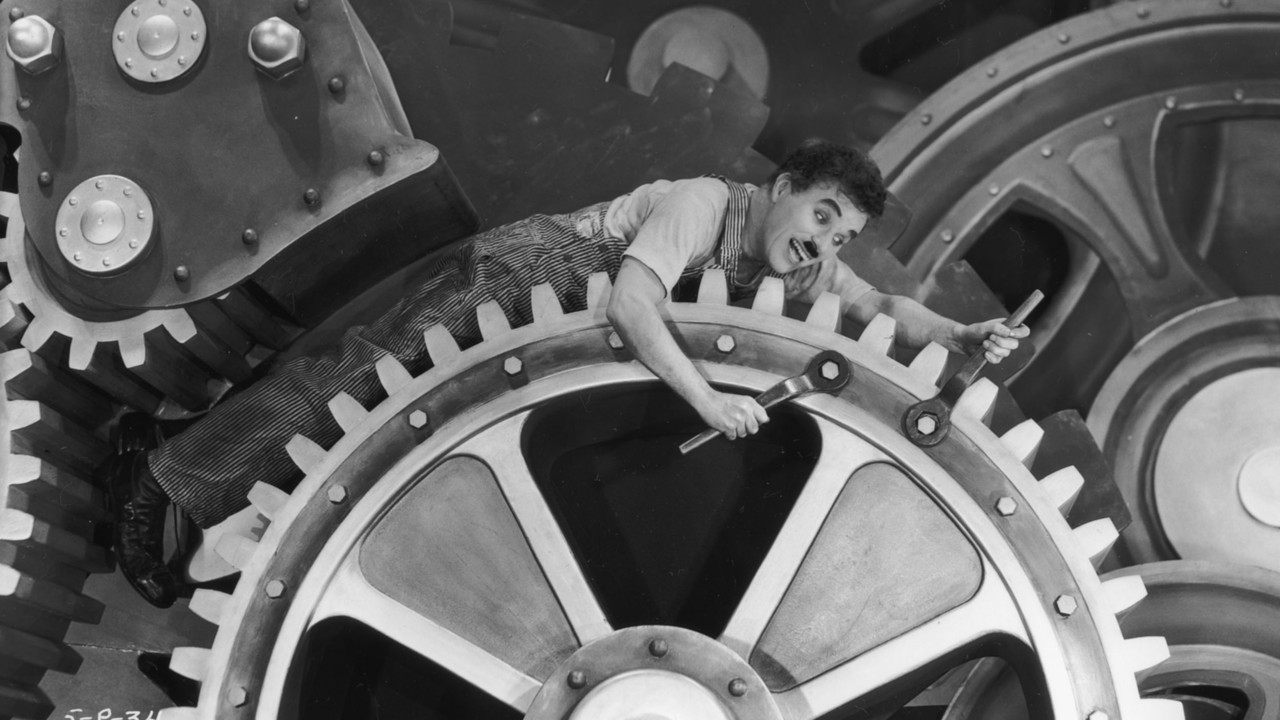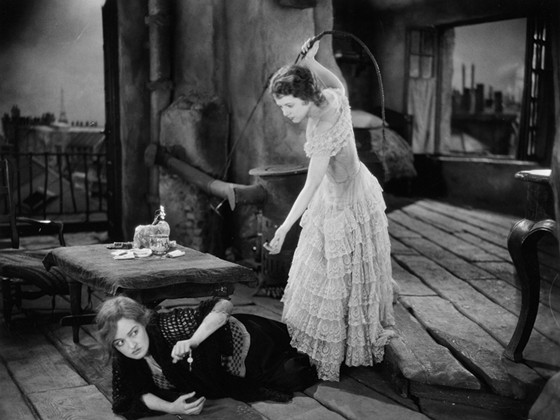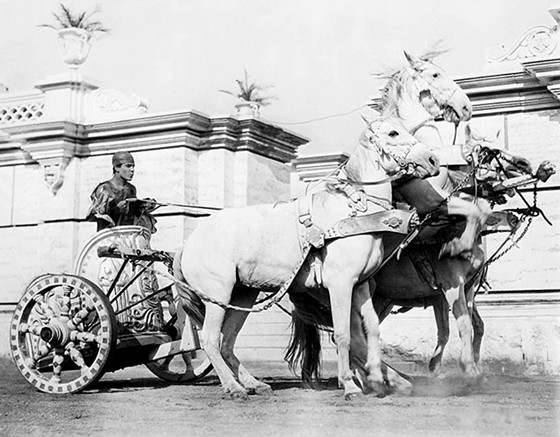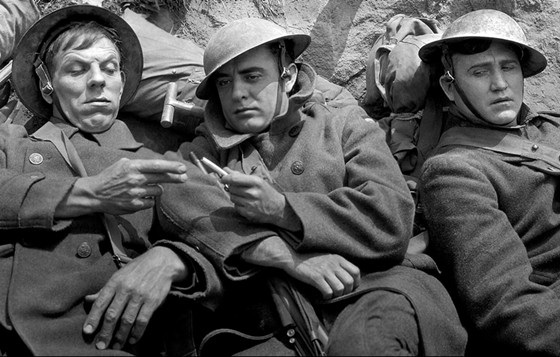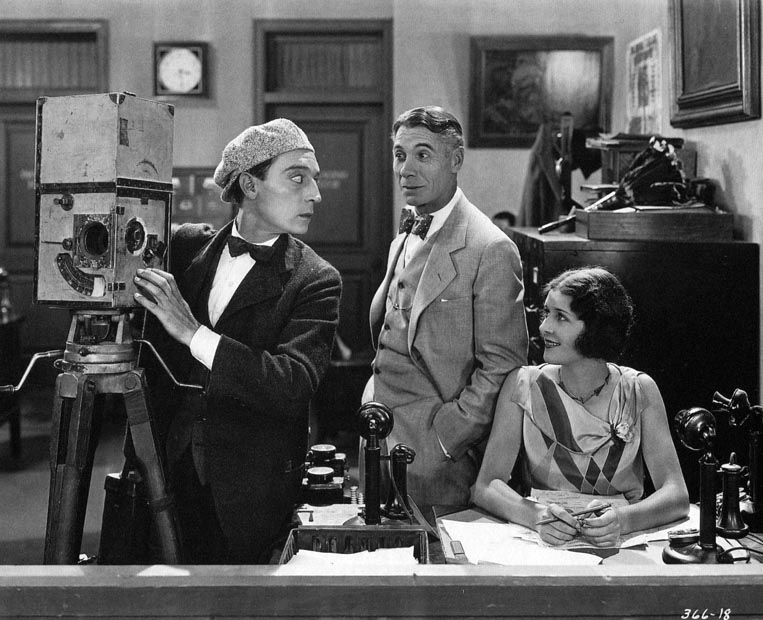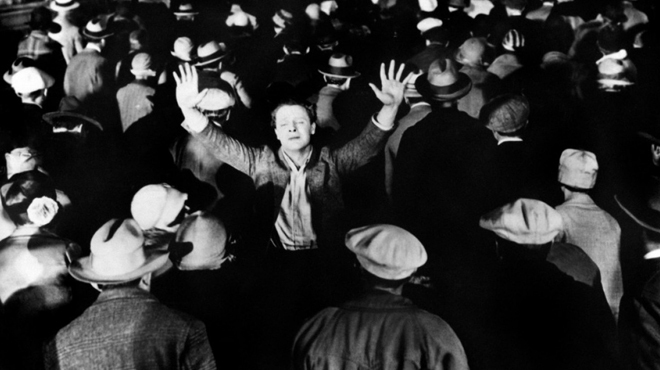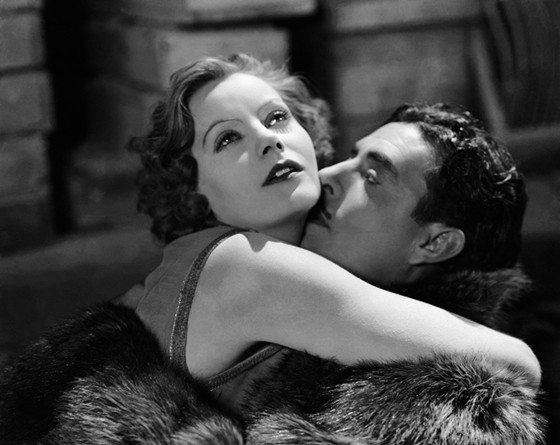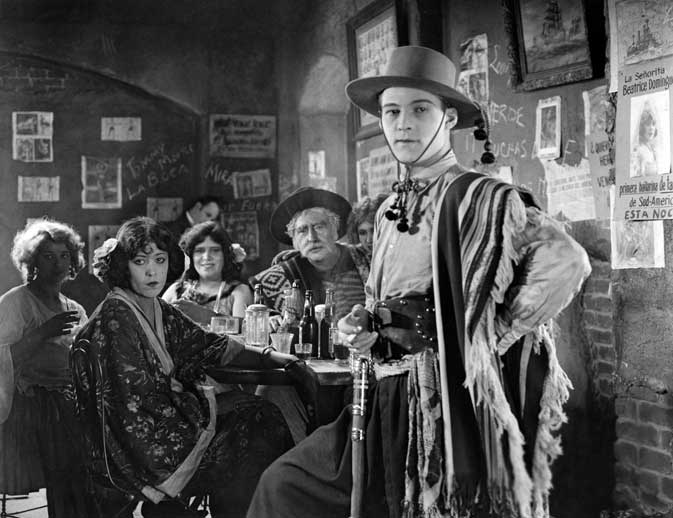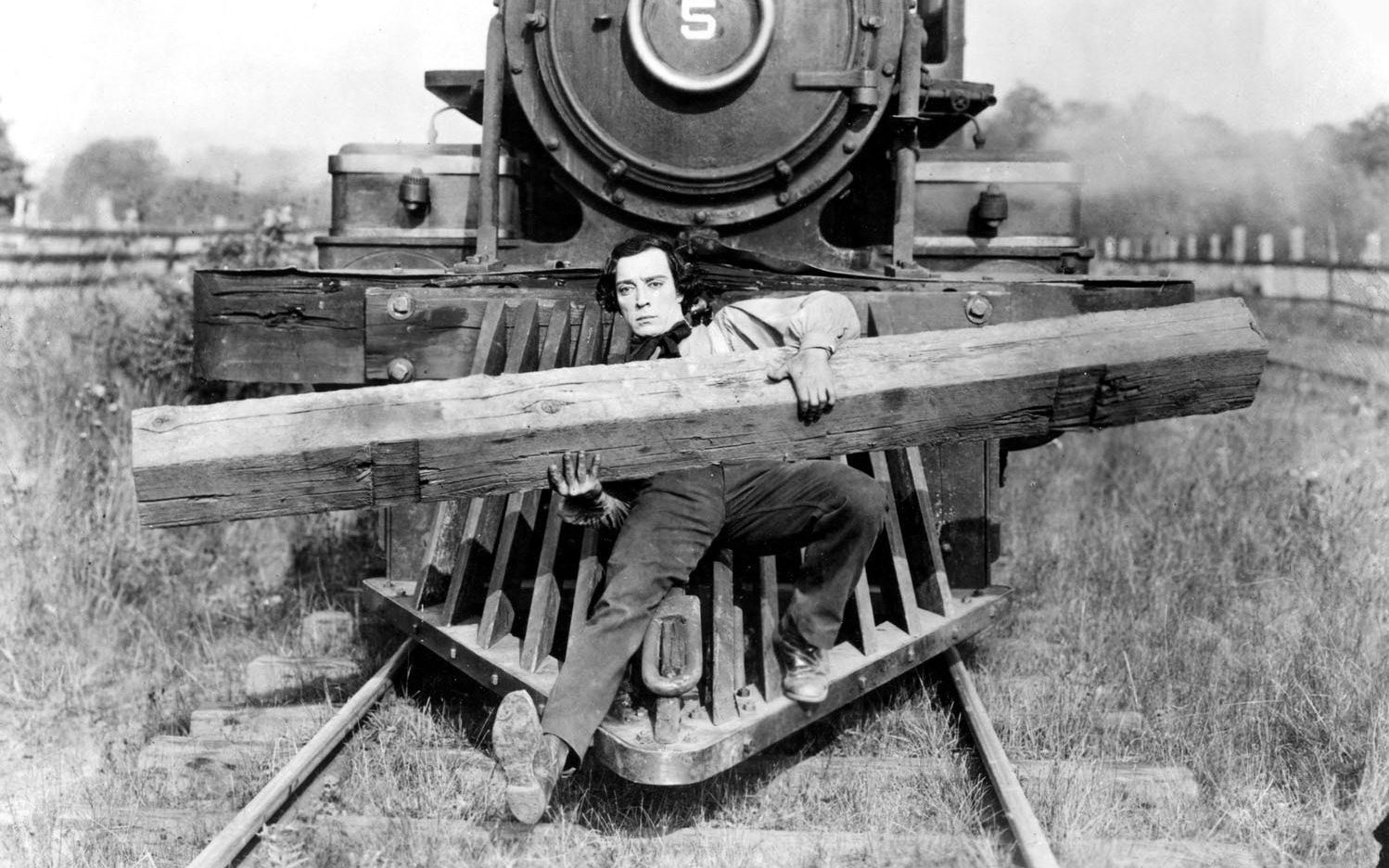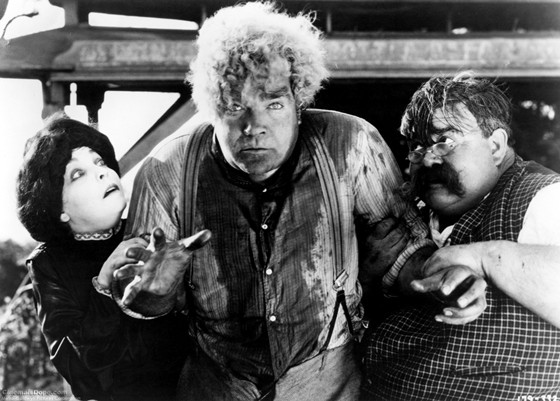The first American movies emerged at the dawn of the 19th century. They told short, simple stories, usually about a chase or a gag, serving as low-cost entertainment to the poor, illiterate mass.
The birth of Hollywood as we know it, however, only came about in the 1910’s, when production moved from New York to California and the Industry started organizing itself. By then, features had proved appealing to middle-class audiences and WWI had devastated the major competitors in the business – the Europeans. It was enough for American producers to gain the upper hand.
Charles Chaplin, D.W. Griffith, Buster Keaton are among the pioneers of filmmaking. They experimented in narrative techniques, editing, mise-en-scène and gradually established the basic elements of the ‘film language’. Meanwhile, the medium strived to find respect and disengage its image from the cheap nickelodeons.
Movies became longer, more refined in storytelling and cinematography, and stars like Mary Pickford, Douglas Fairbanks, Lillian Gish and Rudolph Valentino found world-wide success, helping pave the way for the acceptance of film as an art form.
In 1927, Warner Brothers released the first sound film, The Jazz Singer and less than 10 years later, Charles Chaplin’s Modern Times would unofficially put an end to the era. Nevertheless, as Sunset Blvd.’s Silent-Film star Norma Desmond points out “We had faces then”. Indeed they did, and they continue to fascinate us to this day.
Please note that the list is in alphabetical order; it only includes feature-films (40 minutes or longer by The Academy of Motion Picture Arts standards) and a limit of two entries by director has been set.
1. 7th Heaven
In Frank Borzage’s romantic melodrama, Charles Farrell plays a street cleaner who saves Janet Gaynor from an abusive sister and ends up falling in love with the fragile young woman. He takes her to his modest apartment that stands 7 storeys high, hence the film’s name, and the beautiful quotation from an intertitle: “I work in the sewer, but live near the stars”.
Often compared with Sunrise, which also starred Gaynor, 7th Heaven is an impeccably shot and passionately acted gem from the Silent era. The main couple was one of the most popular from its time and watching the film it’s easy to see why.
Borzage’s sensitive directing sets the perfect tone for an emotional journey that includes the pair’s separation in the war and their subsequent character acts about spiritual and personal growth.
2. Ben-Hur: A Tale of the Christ
This 1925 production was one of the films responsible for making MGM rise above its competitors and establish itself as the most powerful studio in town. No expenses were spared for Fred Niblo’s movie and the famed chariot scene rivals William Wyler’s in both entertainment quality and spectacular effects.
Ramon Novarro gives Charlton Heston a run for his money as the title character and the primitive Technicolor used in some chief scenes is not only significant from a Film-history point of view, but quite magnificent to look at.
One can easily argue that, although frequently overlooked in face of its legendary remake – the 1959 version –, the silent Ben-Hur is just as good as its more famous successor, if not superior on some elements.
3. The Big Parade
Among the great Hollywood war epics, King Vidor’s The Big Parade was responsible for making John Gilbert one of the most popular actors of the 1920’s. He plays a wealthy and naive young fellow who becomes a soldier in the American army during The Great War.
Vidor has us witnessing his training days, his escapades in France and the inevitable changes he goes through over the horrors of the war. The battle scenes are terrifying: soldiers marching to death, bombarded fields and the absolute terror of the trenches. But there is hope amid the chaos, and with some well-dosed humor and irony, our hero loses his innocence only to find love and grow into a responsible man along the way.
4. Broken Blossoms
No luxurious sets or huge production values on this one. In 1919, Griffith validated his status as ‘the father of film’ by telling an incredibly simple story in a sensitive and mature way.
Broken Blossoms follows a fragile girl (Lillian Gish) constantly abused by her father , who finds comfort in her friendship with a gentle Chinese immigrant. The film is ultimately a tale of two lonely, suffering beings who have a small glimpse of hope, in a world plagued by evil and pain.
As the waif, Gish is altogether phenomenal; the scene in which she forces a smile, lifting the corners of her mouth with her fingers, while her small eyes unconsciously reveal her fear, has deservingly become an iconic Film moment. Perhaps no actress in film history has mixed bravery and frailty so well as the Silent-era star did.
5. The Cameraman
1928’s The Cameraman is arguably Buster Keaton’s last masterpiece. His famous gags and acrobatics are present, but the heart of the movie is in its unpretentious love story about an awkward young man, who becomes a cameraman in order to get close to the girl he loves.
The film manages remarkably well to be as funny as his short-films while developing a full-blown narrative. Keaton’s famous stone-face makes him the perfect underdog, fighting villains and romancing leading-lady Marceline Day.
It has laughs, love and an extremely likeable main-character; all in all an irresistible combination that makes it the perfect choice for an introduction to Silent Film.
6. The Crowd
Only a filmmaking genius like King Vidor could transform the realistic tale of a man and his wife desperately trying to achieve their dreams in the scary turmoil of a big city, into a poetic masterpiece.
The theme is universal in its simplicity, that is why we can still relate to the joys and sorrows of John (James Murray) and Mary Sims (Eleanor Boardman) today. Who has never questioned himself when unable to achieve their personal goals? Surely, most of us have at least once felt insignificant before the greatness of ‘The Crowd’.
Cinematographer Henry Sharp creates some of the most beautiful and innovative shots of Silent-Film and we are treated with some truly awe-inspiring shots of New York City. The film manages to be both intimate and monumental and it deserves its place among the prime of the era.
7. Flesh and the Devil
In this old tale of friendship ruined by a temptress, John Gilbert and Greta Garbo prove that their star-quality could elevate the most simplistic plot to classic film status. Their chemistry is so intense and their love scenes play out in such a natural way, it become quite obvious they were having a real life affair.
Besides its celebrated leading-couple, the greatest appeal of the film rests on its glorious cinematography. While many viewers will most likely forget the details of the story, the image of Leo ( Gilbert) and Felicitas (Garbo) exchanging caresses in a dimly lit garden and the shadowy lighting in the final duel are elements that stay in a movie-lover’s mind forever.
8. The Four Horsemen of the Apocalypse
The screen’s original “Latin lover”, Rudolph Valentino, is the uncontested star of this melodrama of epic proportions. Under Rex Ingram’s direction, we are told the engaging saga of a wealthy Argentine family torn apart by envy and war.
At the start of the film, we meet a Tango and women-loving Julio Desnoyers, who doesn’t seem to have a care in the world. With the break of WWI, the young man slowly matures into a brave and selfless soldier; a magnificent work of character development by Valentino, that does more than live up to his regal reputation.
There are also many interesting subplots about themes as varied as adultery, father-son relationships, greed and honor, but one cannot argue that the true message of the film is a strong anti-war appeal, well-symbolized by the image of the title’s frightening Four Horsemen riding across a nebulous sky.
9. The General
Set during the Civil War, The General has Keaton as Johnnie Gray, a man with two loves in his life, his girl, Annabelle Lee (Marion Mack), and his train – The General.
Like a good Confederate, Johnnie tries to enlist, but is refused by the army who thinks he’s too good of an engineer to become a soldier. Called a coward by his family and friends, Johnnie has to prove himself a real hero when his locomotive is stolen by the North.
The General features some of The Great Stone Face’s most daring and inventive gags, but it is ultimately an action movie outlined by many hilarious moments. Keaton’s true genius comes through when we realize he delivers both a flawless achievement in filmmaking, to be studied and referenced, and a plain funny and entertaining film, perfect for a family viewing.
10. Greed
Upon watching the two-hour version of Greed, edited by MGM at the behest of Irving Thalberg, director Erich von Stroheim is said to have commented “It was like viewing a corpse in a graveyard. “
Stroheim’s original vision for the film, which tells of the negative effects of fortune on three men, had almost 10 hours and it’s sadly considered lost. Nonetheless, in 1999, Turner Classic Movies released a restored rendition which reconstructs the original plot with the aid of still photographs.
In 4 hours, one can only get a glimpse at the genius of Stroheim and his wonderful eye for rich visuals and detailed story-telling. Still, it is undoubtedly a work of great craft that even in its brutally mutilated form remains a must-see for Film buffs.
